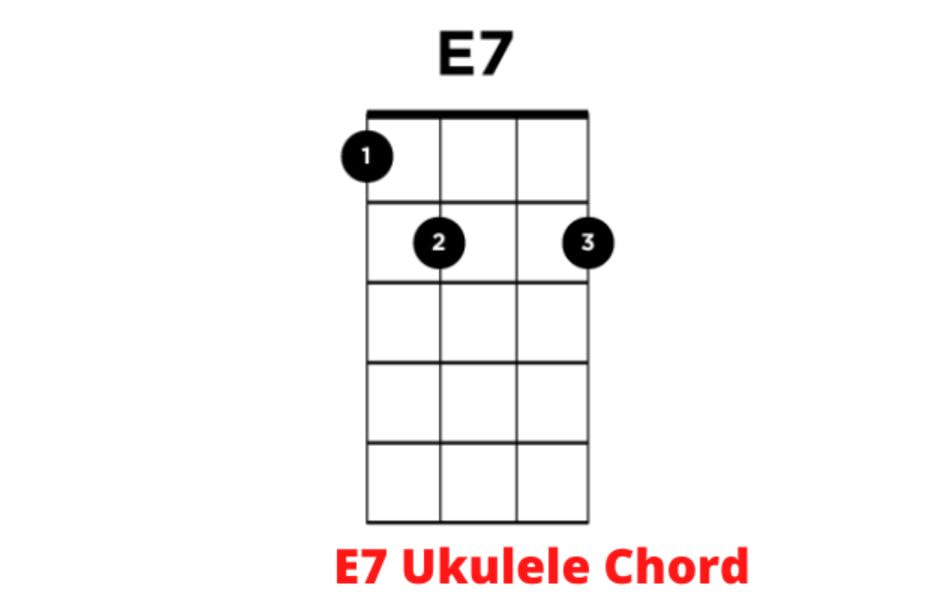How To Play E7 Ukulele Chord By Easily
E7 chord is renowned for its versatility on the ukulele, offering a lively twang that adds zest to your strumming. Throughout this lesson, you'll uncover the distinctive characteristics of the E7 chord and master its execution in various positions.
Notes in E7 ukulele chord
The E7 chord on the ukulele consists of the following notes:
- E: This is the root note of the chord, located on the second fret of the C string.
- G#: This note is the major third of the chord, located on the first fret of the G string.
- B: This note is the perfect fifth of the chord, played open on the A string.
- D: This note is the minor seventh of the chord, located on the second fret of the E string.
When played together, these notes create the distinctive sound of the E7 chord on the ukulele. It's important to ensure that each note rings out clearly when strumming the chord.
Using E7 chord in music
If you're already comfortable with the E major chord, transitioning to the E7 chord will feel familiar yet subtly different. The E major chord comprises the root note, major third, and perfect fifth of the E major scale. With the addition of the seventh note, the E7 chord expands to include all these tones, lending it a distinctive, jazzy quality.
Seventh chords, like the E7, find their place across various musical genres, from jazz and blues to rock and pop. They often serve as transitional elements or build anticipation leading to chord progressions' resolutions.
While there are multiple ways to play an E7 chord on the ukulele, each position involves the same four fundamental notes. Mastering the E7 chord opens up a world of musical possibilities, allowing you to add depth and sophistication to your playing repertoire. Here's a breakdown to help you start mastering this chord.
How to play E7 ukulele chord
The E7 ukulele chord in the 1st position
When fingering the E7 chord on the ukulele, start by positioning your
- Index finger on the first fret of the G string
- Middle finger on the second fret of the C string
- Your ring finger on the second fret of the A string.
It's crucial to keep the top joints of your fingers as straight as possible to avoid touching the other strings. Additionally, ensure that the middle E string remains un-muted, as it's an essential note for the chord. With your fingers positioned perpendicular to the fretboard, mastering the E7 chord becomes a manageable task.

Alternative E7 ukulele chord
The alternative positions of the E7 chord on the ukulele are indeed variations of the same basic chord, differing only in their fretboard position. Instead of being placed on the first frets, they can be positioned on different frets along the strings, producing sounds with varying pitches.
For example, we can play the E7 chord at the 4th, 7th, 9th, 12th, or 13th fret on the ukulele. Each of these positions creates a different sound, with higher or lower pitches depending on the fretboard position.
However, the 1st, 4th, and 7th fret positions are the most common and frequently used. This may be due to the convenience of switching between different chords and their overall sound in various musical situations.

Mastering the E7 chord opens up a world of musical possibilities, injecting your playing with a vibrant energy and dynamic flair. As you delve into its unique sound and explore its versatility across different positions, you'll unlock new avenues for expression and creativity in your ukulele playing journey. Keep practicing and experimenting with the E7 chord, and watch as your musical repertoire expands and evolves.








